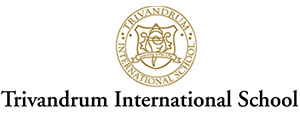Metacognition, often referred to as “thinking about thinking,” is a crucial component of the learning process. It involves students’ awareness of their own learning processes, enabling them to regulate and control their cognitive activities. In education, metacognition helps students become more efficient learners by teaching them how to plan, monitor, and evaluate their learning strategies. This self-awareness enhances the ability to tackle challenges and improves academic performance.
Understanding Metacognition
Metacognition can be broken down into two main components: metacognitive knowledge and metacognitive regulation.
Metacognitive knowledge refers to an individual’s understanding of their own learning processes, including awareness of strengths, weaknesses, and different strategies to approach a task.
Metacognitive regulation involves actively managing one’s learning through planning, monitoring, and evaluating progress.
These components allow learners to adjust their approaches based on their assessment of how well a particular strategy is working.
The Role of Metacognition in Education
In the context of education, metacognition enables students to take responsibility for their learning. When students engage in metacognitive practices, they are not only absorbing information but also analysing how they learn, which leads to deeper understanding and better retention.
For example, when solving a mathematics problem, a student who employs metacognitive strategies may first plan their approach, monitor their progress during the problem-solving process, and evaluate their success after completing the task. This reflective cycle allows them to adjust their strategies for future problems, leading to more effective learning.
Metacognitive Strategies in the Classroom
Teachers play an important role in fostering metacognition among students. By encouraging reflective thinking and providing opportunities for self-assessment, educators can help students develop the skills necessary for independent learning.
Common Metacognitive Strategies
| Strategy | Description |
|---|---|
| Self-questioning | Encourages students to ask themselves questions to clarify understanding. |
| Think-aloud method | Students verbalise their thoughts while solving a problem to track their thinking process. |
| Concept mapping | Helps in organising information visually, facilitating better understanding and retention. |
These strategies can be incorporated into various subjects, from literature to science, allowing students to engage actively with the material rather than passively absorbing it.
Benefits of Metacognition in Education
The advantages of metacognition in education are multifaceted. It improves problem-solving abilities, enhances critical thinking, and promotes autonomous learning. Students who use metacognitive strategies are often more successful because they can identify when they do not understand something and take steps to address it.
Additionally, metacognition helps in overcoming learning obstacles. For instance, if a student struggles with reading comprehension, metacognitive strategies can help them recognise the issue and adapt by re-reading or summarising to ensure better understanding.
| Benefit | Impact on Learning |
|---|---|
| Increased self-awareness | Students gain insight into their strengths and weaknesses. |
| Improved problem-solving skills | Enhances ability to find effective solutions to challenges. |
| Better academic performance | Leads to more effective learning strategies and improved results. |
| Greater motivation | Students feel more in control of their learning, leading to increased motivation. |
Implementing Metacognitive Practices
Incorporating metacognitive practices in education can be done through various activities. One of the simplest ways is encouraging students to reflect on their learning. After completing an assignment or a test, teachers can ask students questions like, “What strategies did you use?” or “What could you have done differently?”
Another effective approach is peer teaching, where students explain concepts to their classmates. This not only reinforces their understanding but also encourages them to think about how they arrived at their answers, enhancing metacognitive skills.
Teachers can also incorporate journaling, where students write about their learning experiences, challenges, and strategies used. This reflective practice deepens their understanding and helps them identify patterns in their learning.
Challenges in Fostering Metacognition
While metacognition is highly beneficial, it is not without challenges. Some students may find it difficult to reflect on their thinking processes, especially younger learners who may not have developed self-regulation skills. Additionally, fostering a metacognitive mindset requires time and effort from both teachers and students.
To overcome these challenges, educators should introduce metacognitive activities gradually and provide continuous feedback to help students refine their reflective skills. By creating a supportive environment, teachers can guide students toward becoming more self-aware learners.
Metacognition plays a vital role in education by empowering students to take control of their learning. By understanding how they learn and applying metacognitive strategies, students can improve their academic performance, develop critical thinking skills, and become more independent learners. Educators, in turn, play a crucial role in fostering this awareness and providing the tools necessary for students to reflect on and improve their learning processes.



